Abstract
A temperature-sensitive ras allele has an effective lethal phase at 29°C about 12 hr after pupation and a temperature-sensitive period for lethality beginning midway through the third larval instar and ending around pupation. The mutation also alters the quantity of pteridines present in the eyes, testes, and Malpighian tubules at 29°C. The temperature-sensitive period for pigment production in the Malpighian tubules occurs in the egg and first instar larvae, and in eyes and testes after pupation. The demonstrated autonomy of the mutant in the eyes implies the tissue-specific functioning of the gene. We suggest that the different temperature-sensitive periods for a single mutation indicate tissue-specific activation of a gene at different times during development, although the possibility of activation of preformed polypeptides has not been eliminated.
Full text
PDF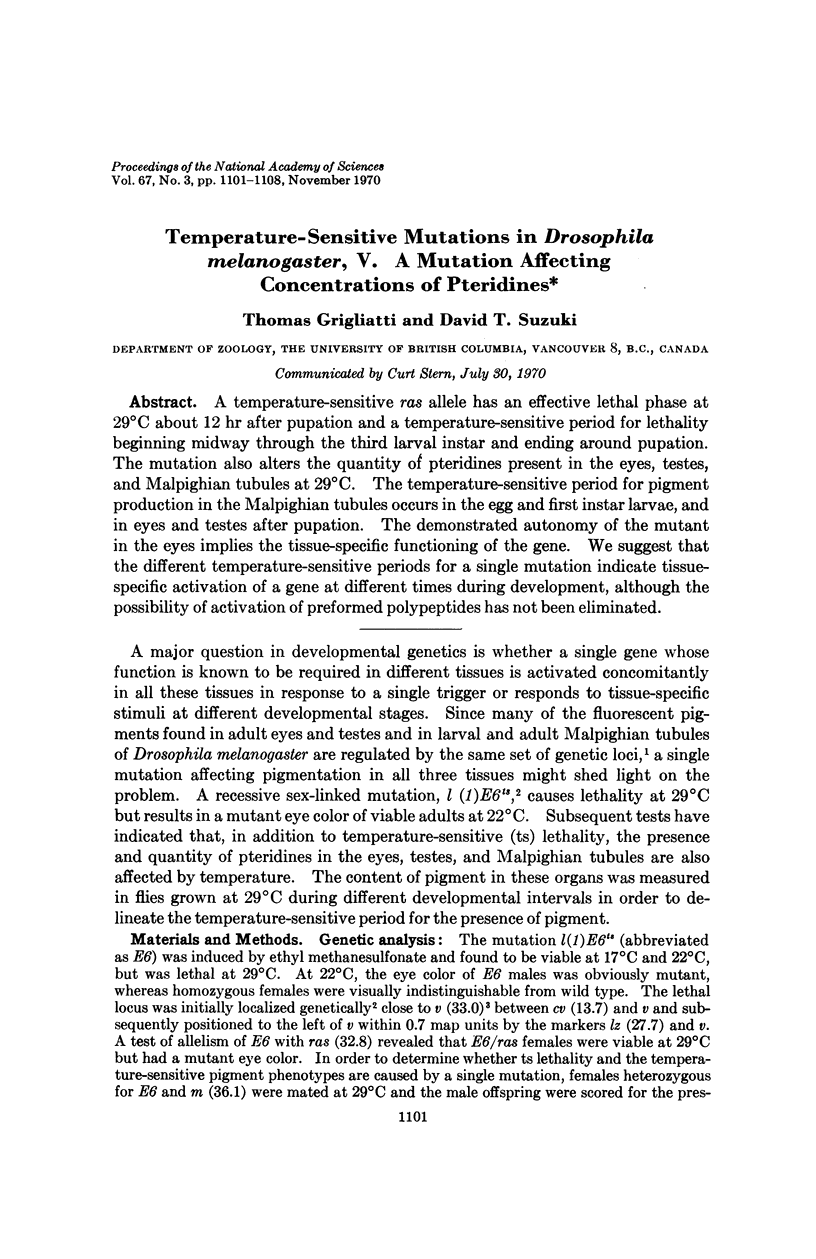
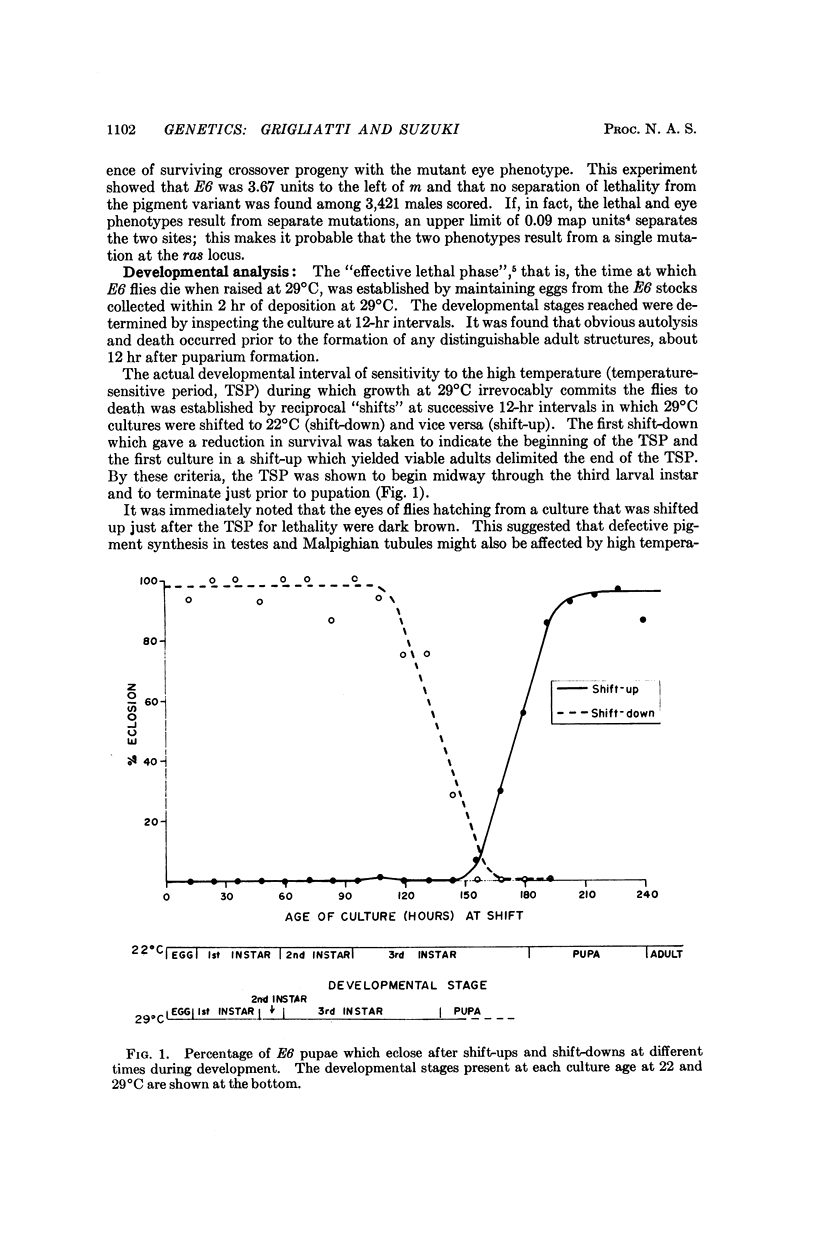
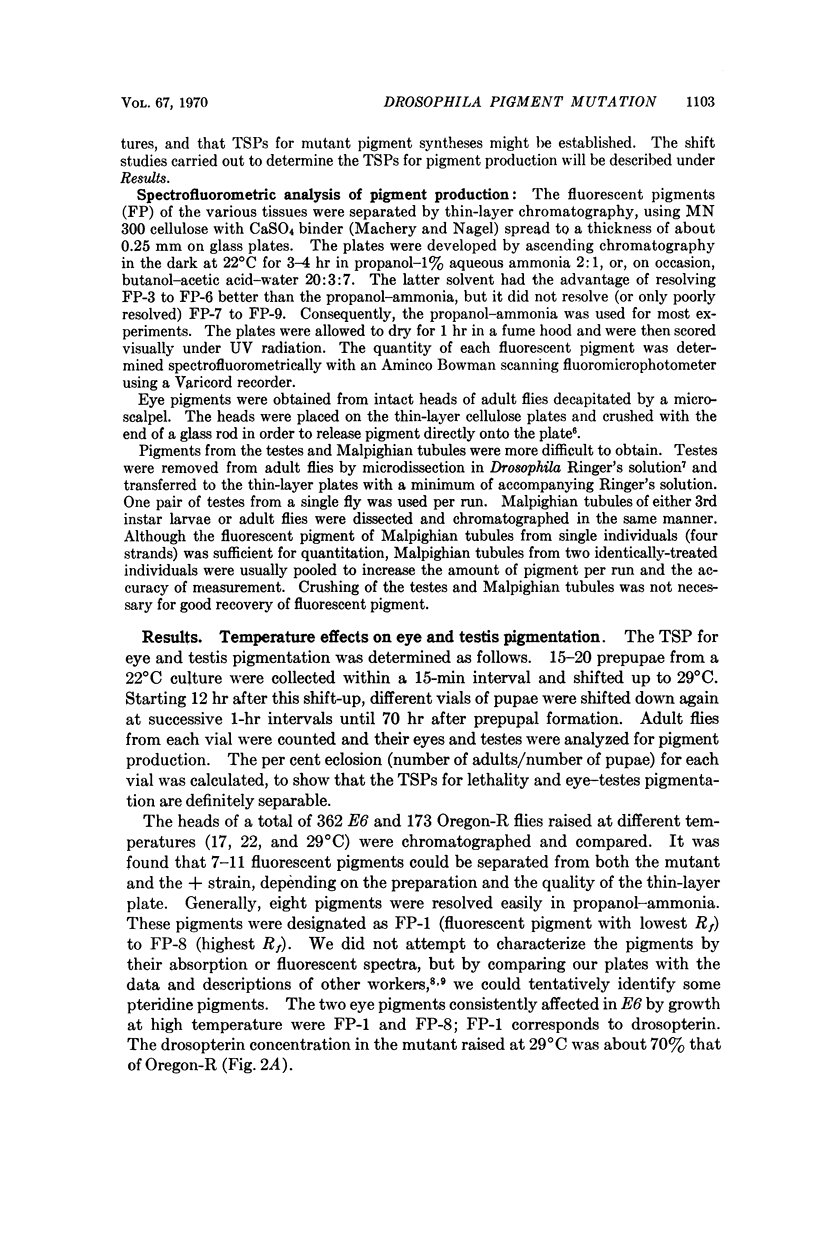

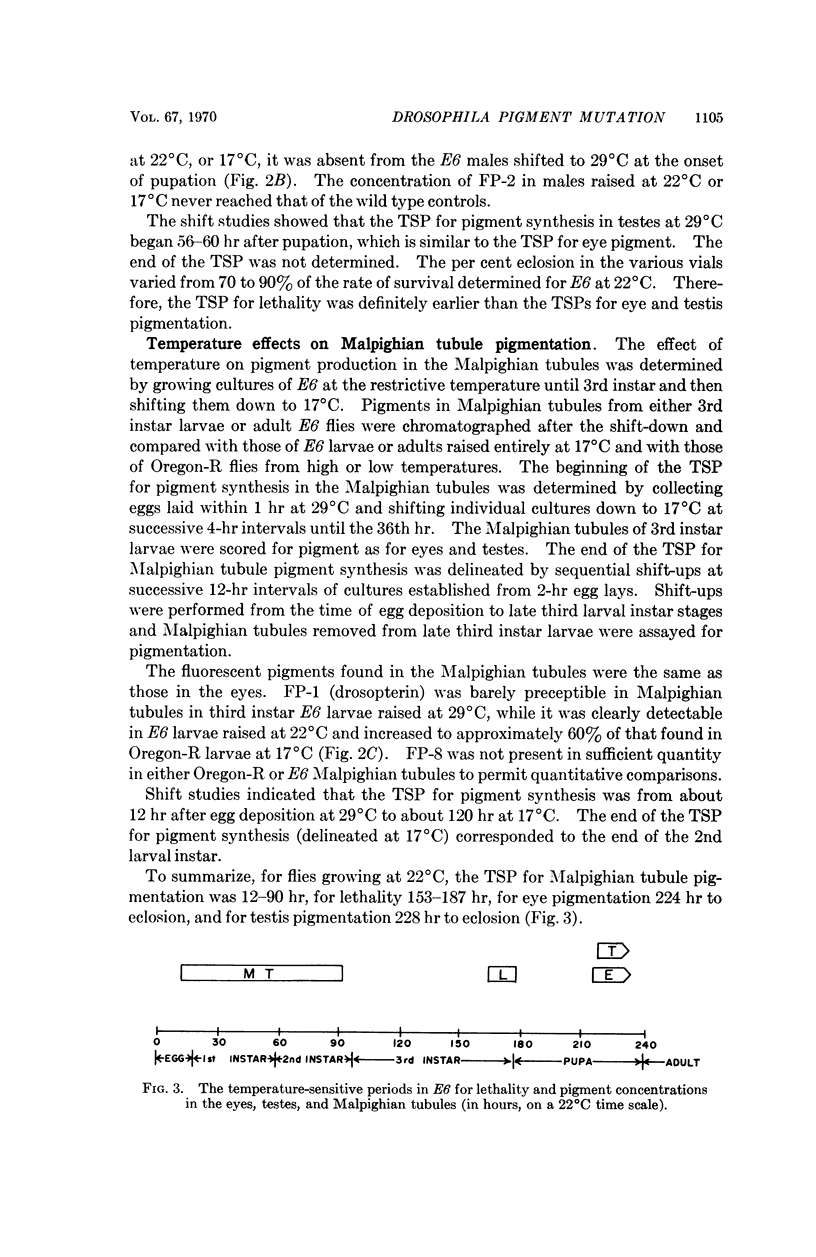
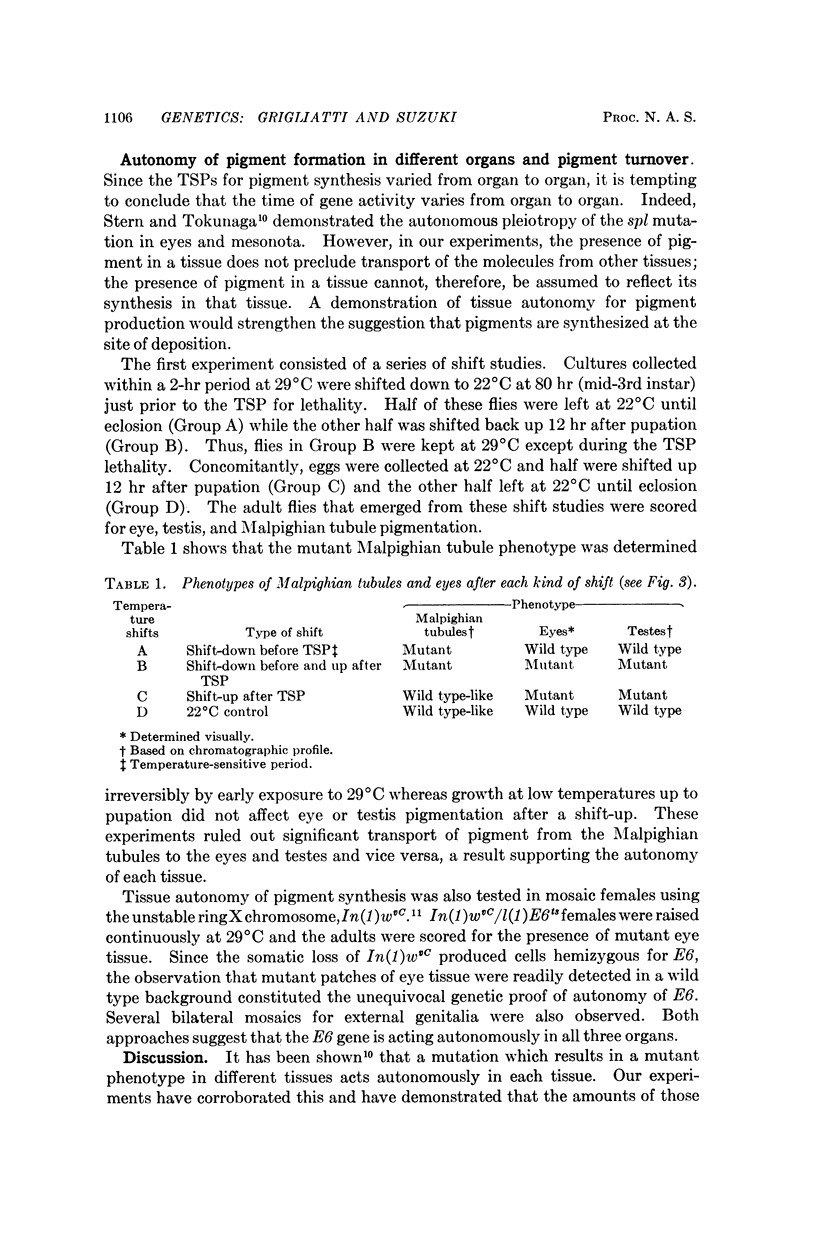
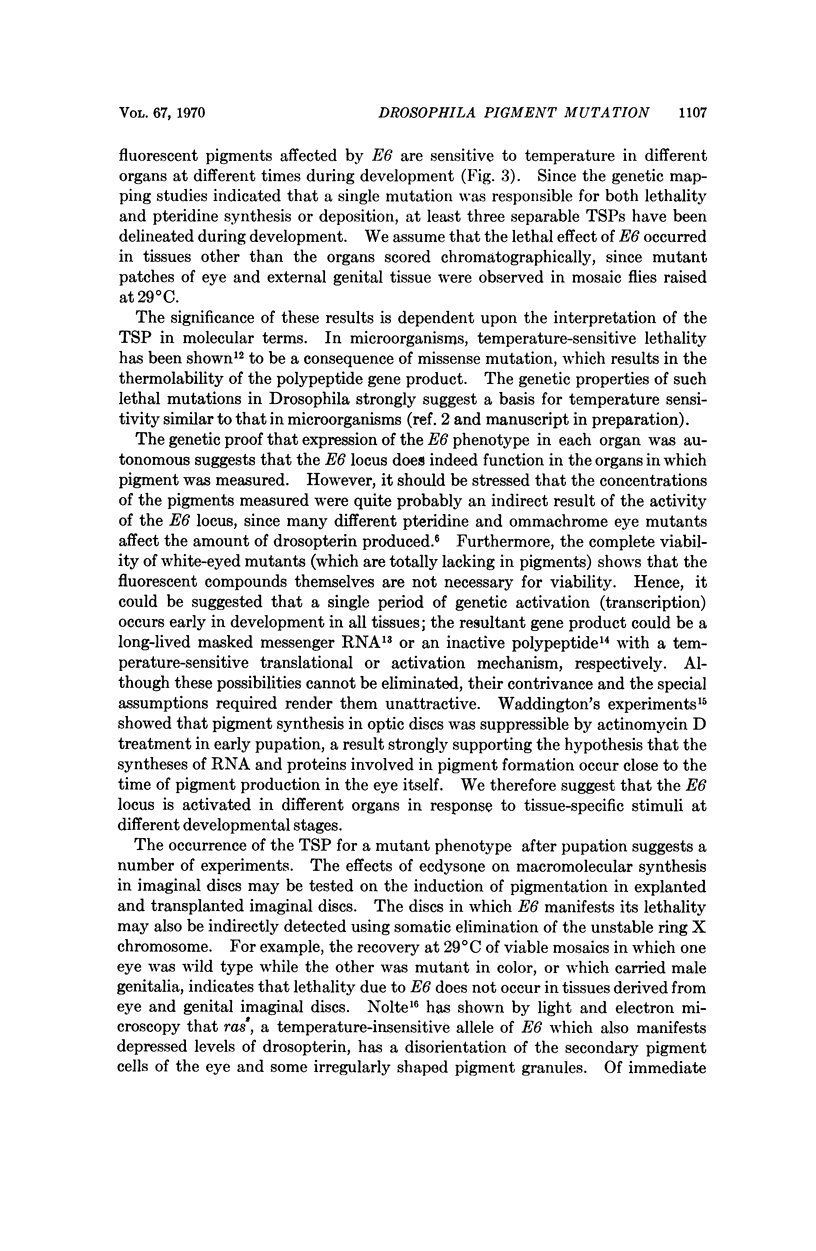
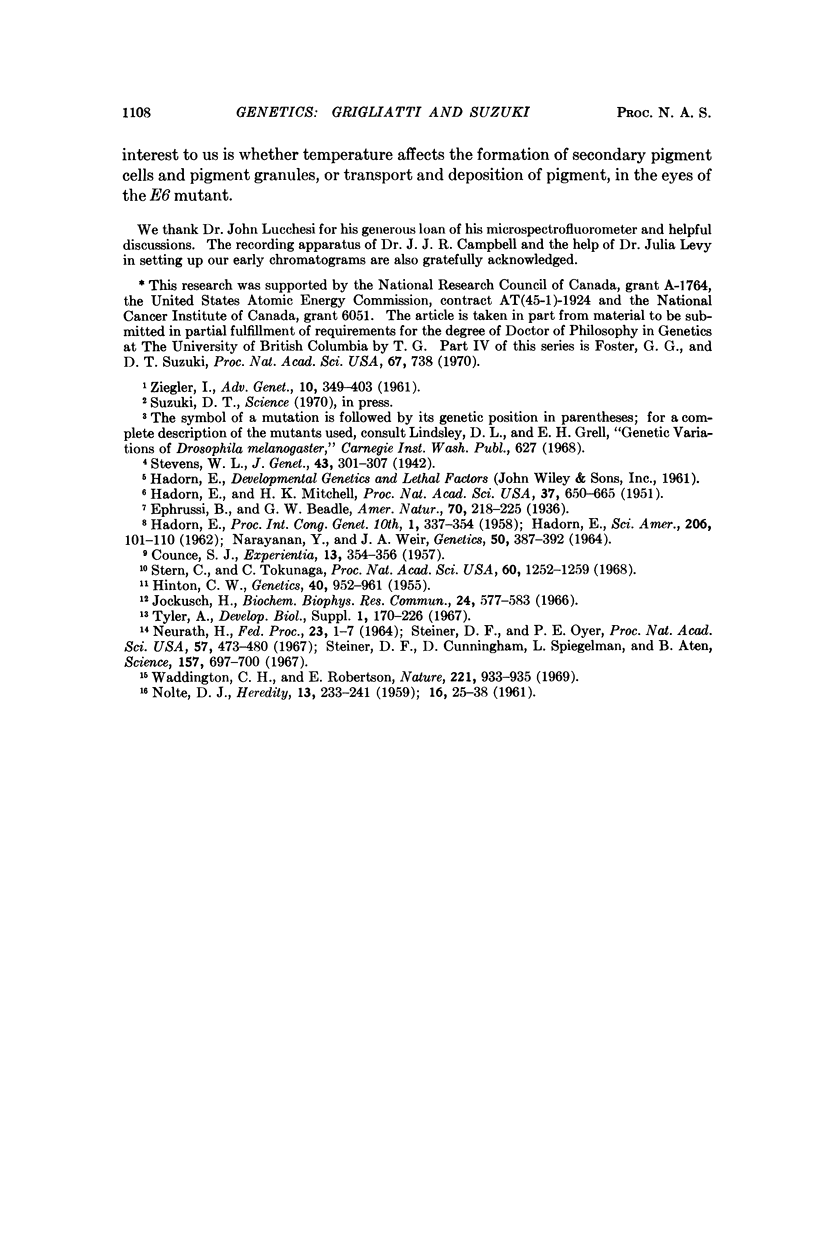
Selected References
These references are in PubMed. This may not be the complete list of references from this article.
- Beadle G. W., Ephrussi B. The Differentiation of Eye Pigments in Drosophila as Studied by Transplantation. Genetics. 1936 May;21(3):225–247. doi: 10.1093/genetics/21.3.225. [DOI] [PMC free article] [PubMed] [Google Scholar]
- COUNCE S. J. A female-sterile mutant (deep orange) of Drosophila melanogaster increasing isoxanthopterine content. Experientia. 1957 Sep 15;13(9):354–356. doi: 10.1007/BF02179162. [DOI] [PubMed] [Google Scholar]
- Hadorn E., Mitchell H. K. Properties of Mutants of Drosophila Melanogaster and Changes During Development as Revealed by Paper Chromatography. Proc Natl Acad Sci U S A. 1951 Oct;37(10):650–665. doi: 10.1073/pnas.37.10.650. [DOI] [PMC free article] [PubMed] [Google Scholar]
- Hinton C W. The Behavior of an Unstable Ring Chromosome of Drosophila Melanogaster. Genetics. 1955 Nov;40(6):951–961. doi: 10.1093/genetics/40.6.951. [DOI] [PMC free article] [PubMed] [Google Scholar]
- Jockusch H. Relations between temperature sensitivity, amino acid replacements, and quaternary structure of mutant proteins. Biochem Biophys Res Commun. 1966 Aug 23;24(4):577–583. doi: 10.1016/0006-291x(66)90360-3. [DOI] [PubMed] [Google Scholar]
- NARAYANAN Y., WEIR J. A. PAPER CHROMATOGRAPHY OF PTERIDINES OF PRUNE AND CLOT STOCKS OF DROSOPHILA MELANOGASTER. Genetics. 1964 Sep;50:387–392. doi: 10.1093/genetics/50.3.387. [DOI] [PMC free article] [PubMed] [Google Scholar]
- NEURATH H. MECHANISM OF ZYMOGEN ACTIVATION. Fed Proc. 1964 Jan-Feb;23:1–7. [PubMed] [Google Scholar]
- Steiner D. F., Cunningham D., Spigelman L., Aten B. Insulin biosynthesis: evidence for a precursor. Science. 1967 Aug 11;157(3789):697–700. doi: 10.1126/science.157.3789.697. [DOI] [PubMed] [Google Scholar]
- Stern C., Tokunaga C. Autonomous pleiotropy in Drosophilia. Proc Natl Acad Sci U S A. 1968 Aug;60(4):1252–1259. doi: 10.1073/pnas.60.4.1252. [DOI] [PMC free article] [PubMed] [Google Scholar]
- Waddington C. H., Robertson E. Determination, activation and actinomycin D insensitivity in the optic imaginal disk of Drosophila. Nature. 1969 Mar 8;221(5184):933–935. doi: 10.1038/221933a0. [DOI] [PubMed] [Google Scholar]


